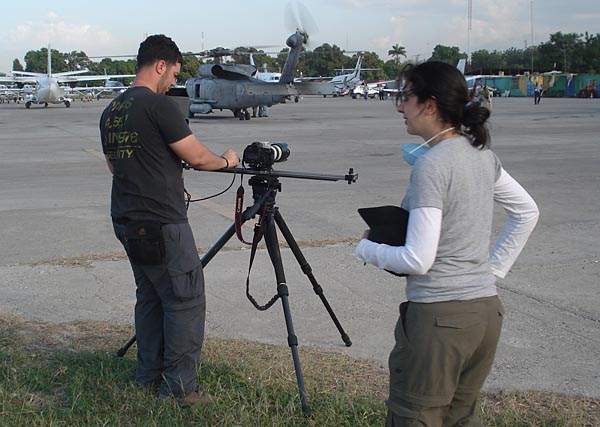A personal opinion by Dan Chung
Filmmaker and blogger Ron Dawson recently interviewed both Khalid Mohtaseb and myself for his excellent podcast Crossing the 180. Here it is for those who missed it. You can hear and read more on Ron’s great website here.
″
Download MP3 | Subscribe in iTunes | Permalink
I have to admit to being a little surprised by the strength of the reactions to Khalid’s piece from Haiti. Having given it a lot more thought I think the debate around the video actually highlights a complete lack of consensus among pros about what forms visual journalism should take. For me Khalid’s piece did what so many other news videos from Haiti had failed to do – draw me in emotionally. It was not presented as a straight news piece and Khalid was very open and honest about how he shot it and what he intended to produce. Both detractors and advocates of Khalid’s video talk about the context, or lack of it, in the piece – for me it didn’t need the voice over or narrative structure because it came in the light of weeks of news coverage from all major sources that gave it the necessary context. If this had been the first and only news video from Haiti it would have been completely wrong, but this is not that – it’s a colour piece, several weeks in, designed to show a different side of life in Haiti.

As I say in the podcast there are many different forms of journalistic video and the more cinematic ones are really a very tiny percentage of the news pieces produced right now. Personally I will continue to use many different genres of news and documentary video depending on how in my opinion the story can best be told.
I have for a long time argued for a more photographic quality to video on news websites; there is no reason that video cannot be used in the same way as a still photograph to illustrate a written piece. We have all got used to the established genres and their ways of presenting news and documentary but these are not written on tablets of stone and were largely defined by an era where TV and cinema dominated, not the internet. I believe now there is room for variety – there is absolutely nothing wrong with a well-told story done using purely visual story telling. That is essentially what a stills photo essay is (the context can come in the accompanying text). I do not see this as conflicting with my belief that we should also create more structured videos that give voice to the subjects of the video – we can do both. I liken this to photographs in the main news section of a newspaper and photos in the magazine section from the same story – one can be a straight news picture of a real event, the other can be a posed flash lit portrait of the subject of the story in a studio – both help tell the story from different perspectives. The fact you shoot a studio portrait of someone involved in a news story does not denigrate the medium of hard news photography, likewise when I say I like Khalid’s piece it does not mean that I dislike or in any way denigrate more conventional documentary from Haiti. On the contrary, one of my favourite pieces is by well known videojournalist Travis Fox for PBS Frontline. It is far more conventional, beautifully shot and very effective (incidentally, much of it was also shot on a Canon DSLR).
One of my favourite examples of a more photographic/cinematic style of journalism is by no less than Christopher Morris, the multiple award winning VII photo agency and Time magazine photographer.
Obama’s Burden from Christopher Morris on Vimeo.
While Morris photographed the President Obama on assignment for Time magazine he also shot short films on Canon 5DmkII and 7D DSLRs. In each film he tries to convey a message – he uses black and white along with tilt and shift lenses to give unique feeling to his films. His great eye and unique access give a totally different view of a Presidency to that of the broadcasters. I would argue that this is good journalism, and that his ideas and his methodology are laid out – it is that magazine photo essay but in a moving format.
The New Leader from Christopher Morris on Vimeo.
Obama’s War from Christopher Morris on Vimeo.
One thing is clear to me; news and documentary video from photographers on the internet is struggling to find an audience. If we continue to do only the same old formats as our TV brethren we won’t be able to compete for long – the likes of the BBC will do it better most of the time. I’m glad there are photographers, cameramen and women and videojournalists out there who are prepared to try to move the medium forward.







